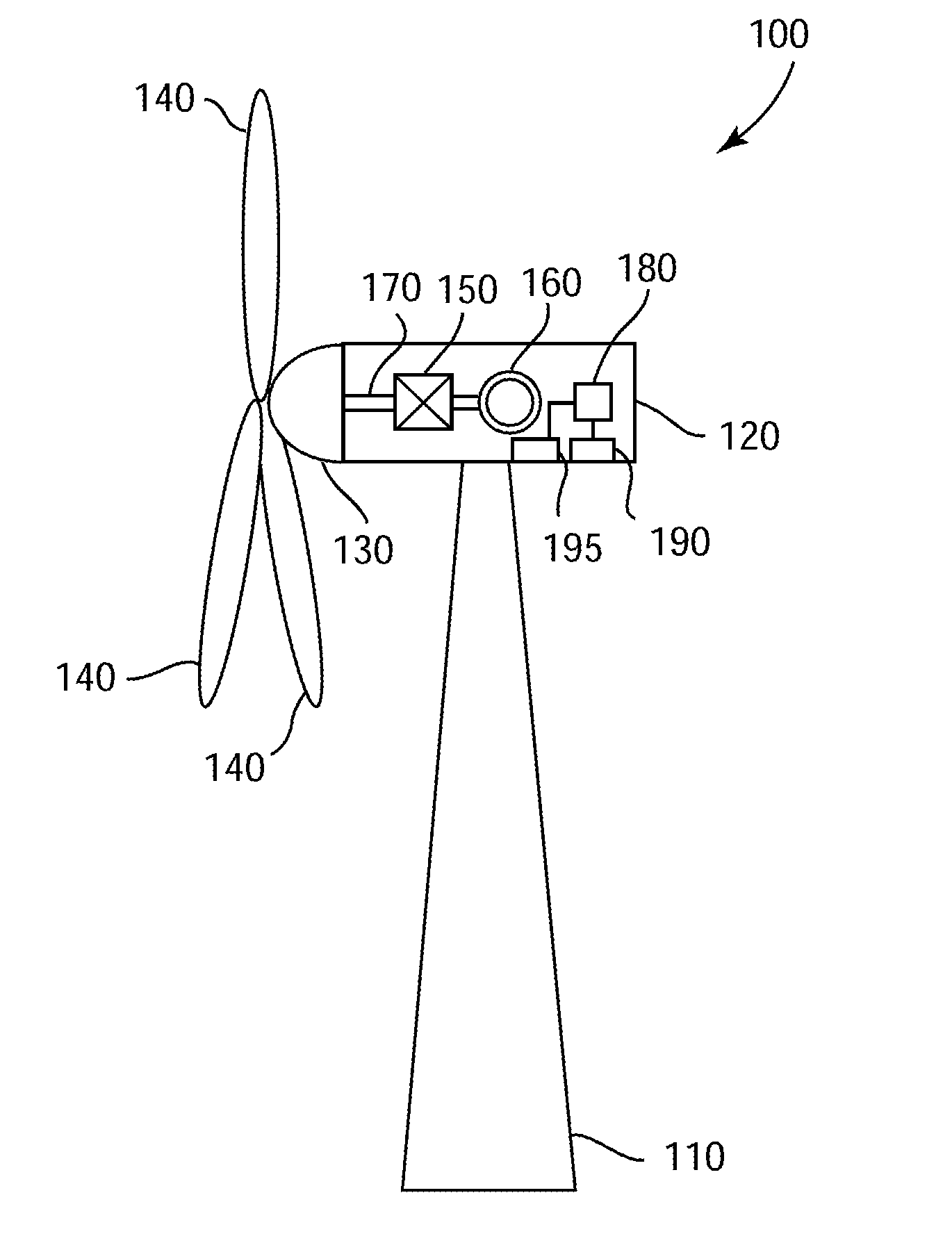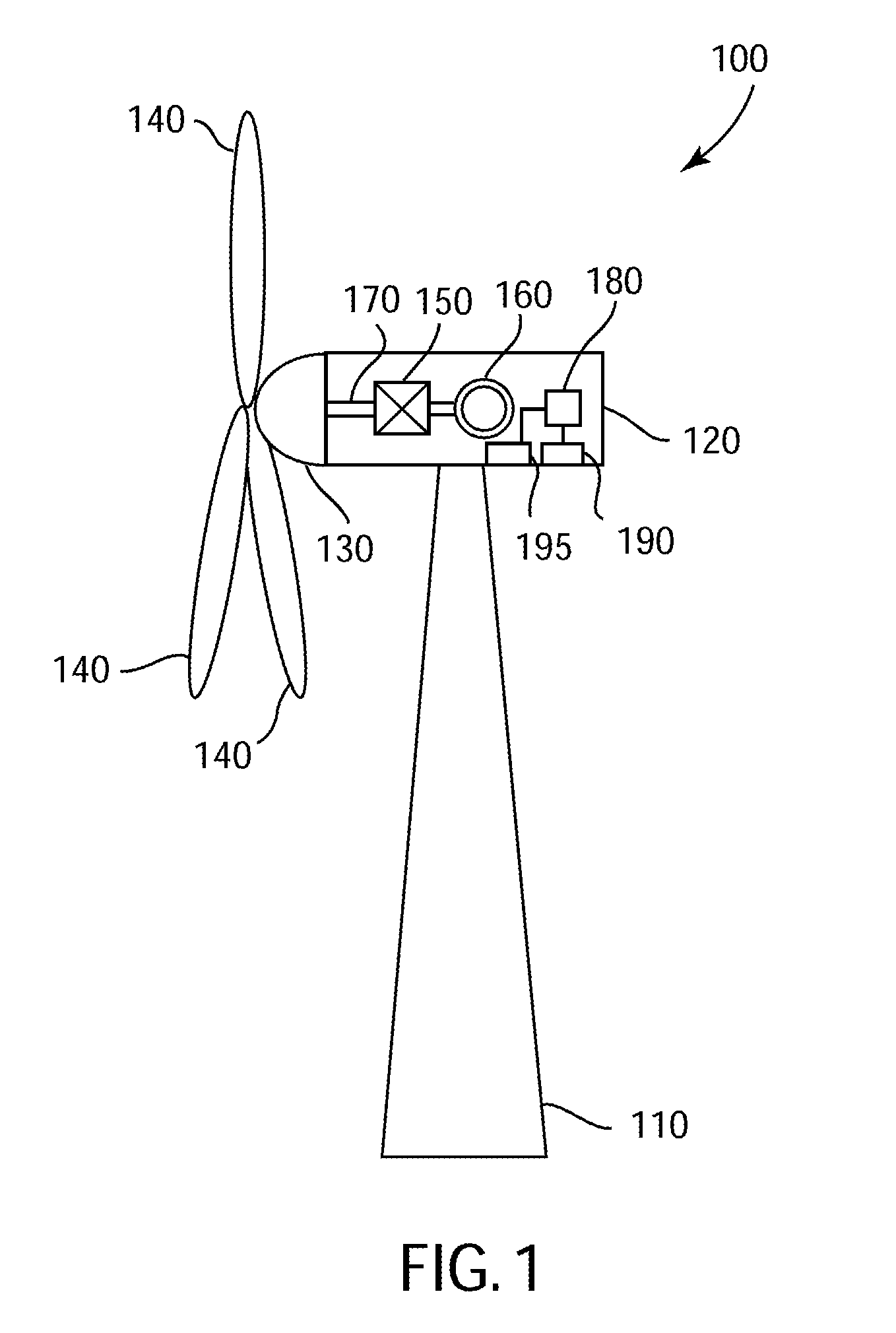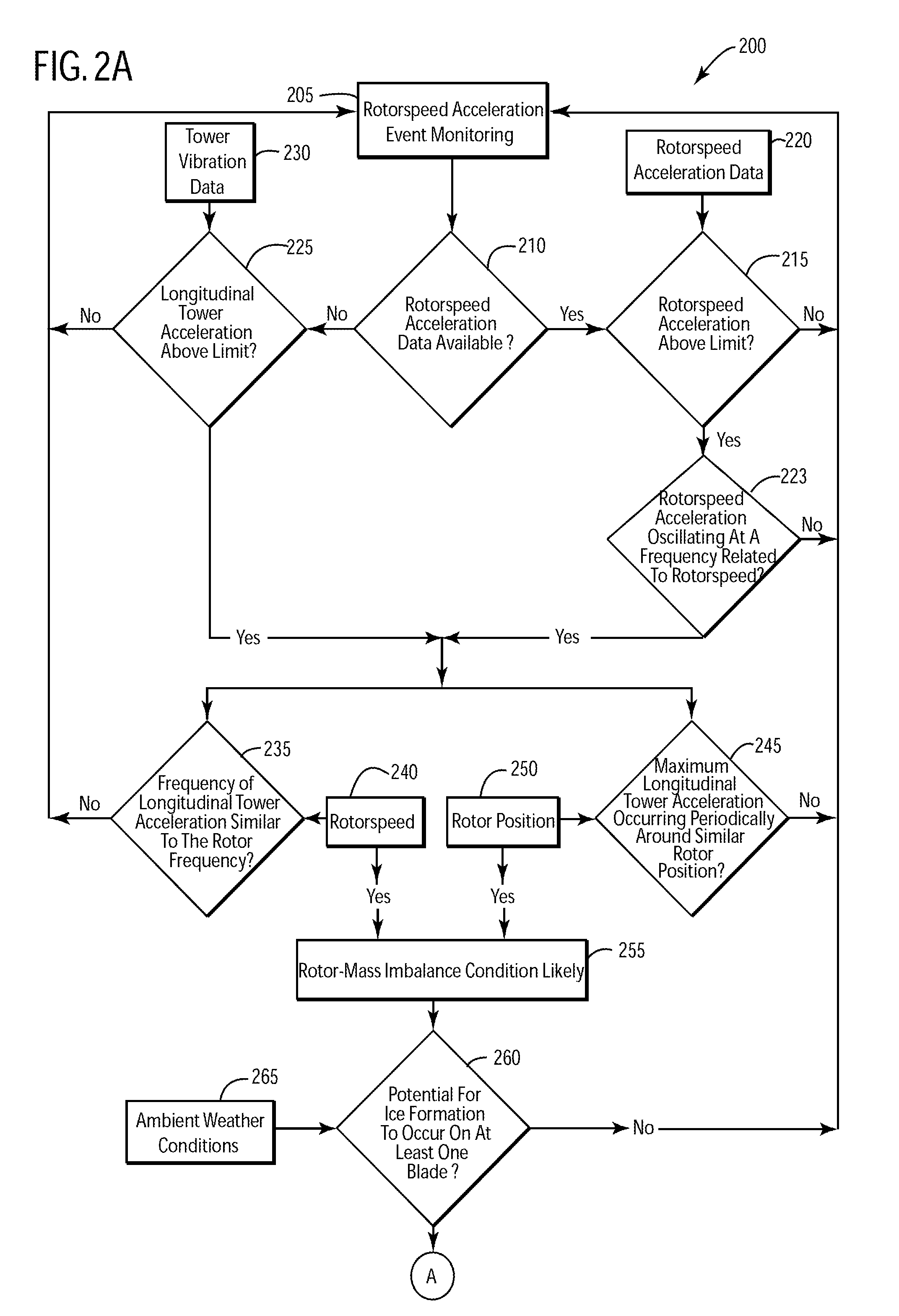Method and system for utilizing rotorspeed acceleration to detect asymmetric icing
a technology of rotorspeed acceleration and detection method, applied in the direction of rotors, vessel construction, marine propulsion, etc., can solve the problems of reduced power output, higher fatigue load, and higher stress on some wind turbine components
- Summary
- Abstract
- Description
- Claims
- Application Information
AI Technical Summary
Benefits of technology
Problems solved by technology
Method used
Image
Examples
Embodiment Construction
[0015]The present invention has the technical effect of determining when asymmetric icing may be occurring on at least one blade of a wind turbine. As described below, embodiments of the present invention may be applied to a wide variety of wind turbine, each comprising at least two blades. After determining that asymmetric icing may be occurring, embodiments of the present invention may provide a notification of the icing condition.
[0016]The following detailed description of preferred embodiments refers to the accompanying drawings, which illustrate specific embodiments of the invention. Other embodiments having different structures and operations do not depart from the scope of the present invention.
[0017]Certain terminology may be used herein for the convenience of the reader only and is not to be taken as a limitation on the scope of the invention. For example, words such as “upper”, “lower”, “left”, “right”, “front”, “rear”, “top”, “bottom”, “horizontal”, “vertical”, “upstream”...
PUM
 Login to View More
Login to View More Abstract
Description
Claims
Application Information
 Login to View More
Login to View More - R&D
- Intellectual Property
- Life Sciences
- Materials
- Tech Scout
- Unparalleled Data Quality
- Higher Quality Content
- 60% Fewer Hallucinations
Browse by: Latest US Patents, China's latest patents, Technical Efficacy Thesaurus, Application Domain, Technology Topic, Popular Technical Reports.
© 2025 PatSnap. All rights reserved.Legal|Privacy policy|Modern Slavery Act Transparency Statement|Sitemap|About US| Contact US: help@patsnap.com



